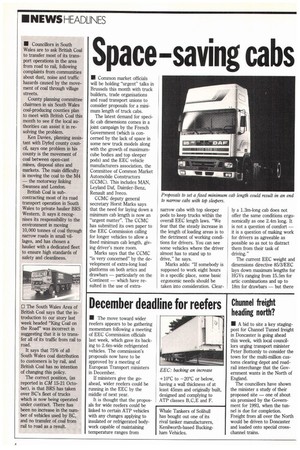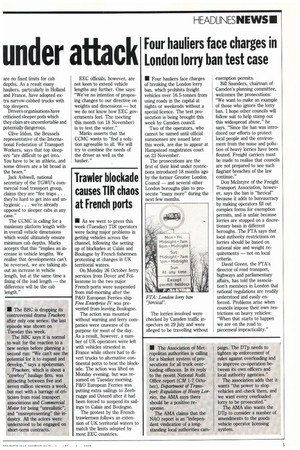Space-saving cabs under attack
Page 6

Page 7

If you've noticed an error in this article please click here to report it so we can fix it.
• Common market officials will be holding "urgent" talks in Brussels this month with truck builders, trade organisations and road transport unions to consider proposals for a minimum length of truck cabs.
The latest demand for specific cab dimensions comes in a joint campaign by the French Government (which is concerned by the lack of space in some new truck models along with the growth of maximumcube bodies and top sleeper pods) and the EEC vehicle manufacturers association, the Committee of Common Market Automobile Constructors (CCMC). This includes MAN, Leyland Daf, Daimler-Benz, Renault and Iveco.
CCMC deputy general secretary Horst Marks says that the need for laying down a minimum cab length is now an "urgent matter". The CCMC has submitted its own paper to the EEC Commission calling for longer vehicles to allow a fixed minimum cab length, giving driver's more room.
Marks says that the CCMC "is very concerned" by the development of extra-long load platforms on both artics and drawbars — particularly on the Continent — which have resulted in the use of extra narrow cabs with top sleeper pods to keep trucks within the overall EEC length laws. "We fear that the steady increase in the length of loading areas is to the detriment of working conditions for drivers. You can see some vehicles where the driver almost has to stand up to drive," he says.
Marks adds: "If somebody is supposed to work eight hours in a specific place, some basic ergonomic needs should be taken into consideration. Clear ly a 1.3m-long cab does not offer the same conditions ergonomically as one 2.4m long. It is not a question of comfort — it is a question of making work for drivers as agreeable as possible so as not to distract them from their task of driving."
The current EEC weight and dimensions directive 85/3/EEC lays down maximum lengths for HGVs ranging from 15.5m for artic combinations and up to 18m for drawbars — but there are no fixed limits for cab depths. As a result many hauliers, particularly in Holland and France, have adopted extra narrow-cabbed trucks with top sleepers.
Drivers organisations have criticised sleeper pods which they claim are uncomfortable and potentially dangerous.
Clive Iddon, the Brussels representative of the International Federation of Transport Workers, says that top sleepers "are difficult to get into. You have to be an athlete, and some drivers are a bit broad in the beam."
Jack Ashwell, national secretary of the TGWU's commercial road transport group, claims they are "fire traps. . they're hard to get into and unhygienic. . . we're already opposed to sleeper cabs in any case."
The CCMC is calling for a maximum platform length within overall vehicle dimensions which would ultimately ensure minimum cab depths. Marks accepts that this "implies an increase in vehicle lengths. We realise that developments can't be reversed, we are talking about an increase in vehicle length, but at the same time a fixing of the load length — the difference will be the cab length." EEC officials, however, are not keen to extend vehicle lengths any further. One says: "We've no intention of proposing changes to our directive on weights and dimensions — but we do not know how EEC governments feel. The meeting this month (on 18 November) is to test the water."
Marks asserts that the CCMC wants to "find a solution agreeable to all. We will try to combine the needs of the driver as well as the haulier."




































































































